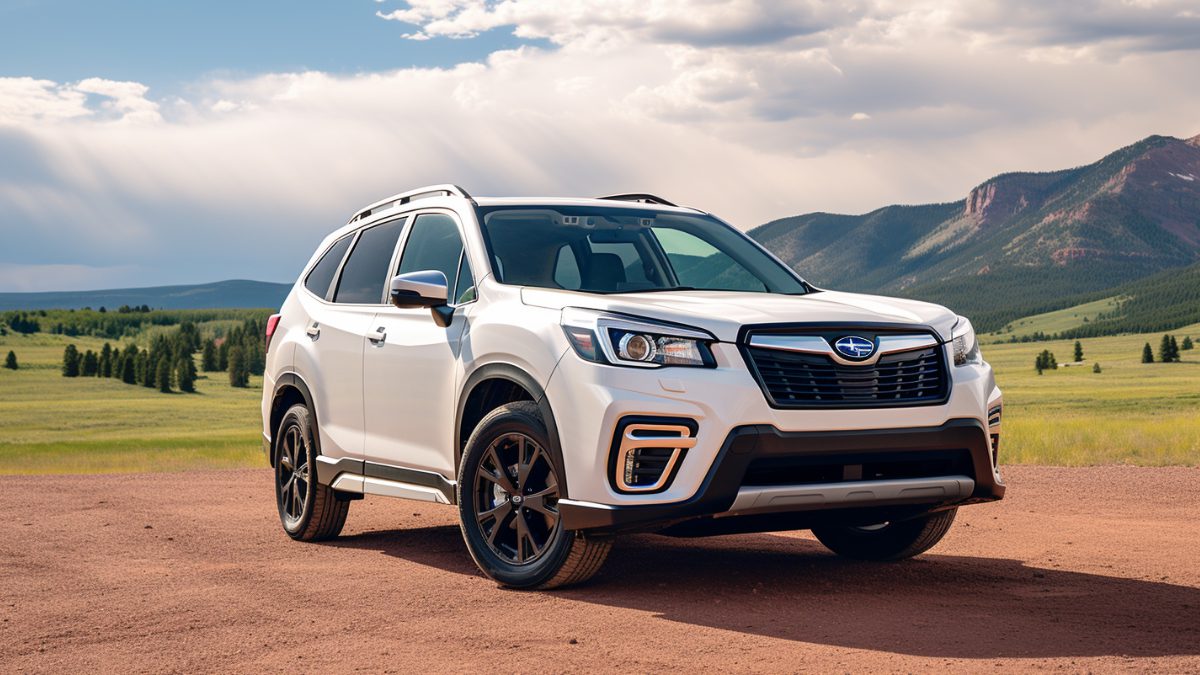Subaru Forester ABS Light On: Causes and Resetting Solutions
Picture this: You’re belting out your favorite tune, cruising along in your Subaru Forester. But suddenly, an ABS (Anti-lock Braking System) warning light on your dashboard flashes on.
What could have gone wrong, and what’s causing the Subaru Forester ABS to light on? Well, it is mostly due to a low brake fluid level or uneven tire pressure. However, more serious issues also cause this, including a faulty wheel speed sensor, a malfunctioning ABS module, or even a blown fuse.
With such a wide range of possible causes, figuring out the solutions surely is overwhelming. But fear not! This comprehensive guide is here to solve the ABS light issue for you. So, buckle up and journey along!
Subaru Forester ABS Light On: Causes
The ABS in your Subaru Forester is built to stop and make sure that the wheels don’t get stuck or do skidding behavior during braking. According to a 2013 peer-reviewed study, it reduces the rate of road accidents by up to 40%.
However, when the ABS light illuminates your dashboard, it’s a sign that the ABS is not functioning as it should.
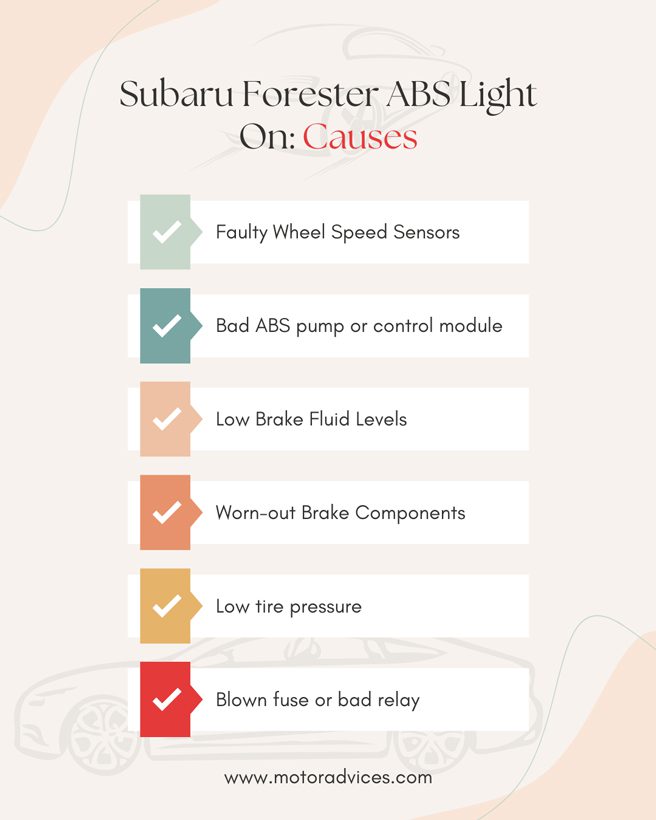
So now, let’s delve into the reasons why this happens.
1. Faulty Wheel Speed Sensors
Wheel speed sensors detect each wheel’s moving rate. If a sensor malfunctions, it will send incorrect signals to the ABS-ECU. This will cause the ABS light to come on.
And wheel speed sensors may fail due to physical damage, corrosion, or wear and tear over time. The failure inhibits the ABS from correctly understanding wheel speed and affects its capacity to balance braking power.
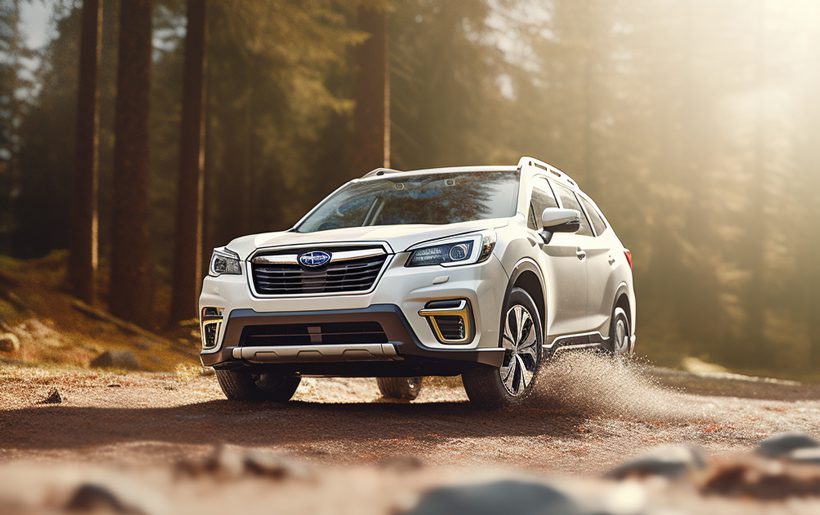
2. Bad ABS pump or control module
The ABS module is the brain behind the ABS. It is a processor chip that constantly inspects your car’s ABS system.
If the ABS control module stops working, it will behave randomly and cause your brake shoes to lock up. It is susceptible to electronic faults, heat damage, and corrosion, which may lead to a lit ABS light.
As supported by a 2014 study report, a malfunctioning ABS module cannot control the brake fluid pressure effectively and compromises the ABS function.
3. Low Brake Fluid Levels
Excessively low brake fluid level triggers the ABS light in Forester. If the brake fluid level is low, the brake system will not function properly, and the ABS light may come on. This happens due to a leak in the brake system or normal wear and tear.
4. Worn-out Brake Components
Over time, brake components like pads, discs, or calipers will wear down. This will create a change in brake pressure that the ABS detects, turning on the ABS light.
Regular wear and tear or aggressive driving habits will mainly hasten this wear. The worn-out parts may affect the normal operation of the ABS.
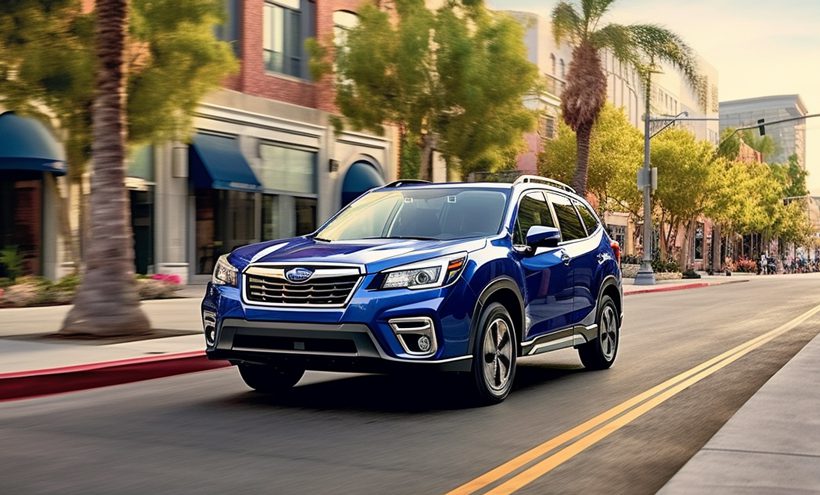
5. Low tire pressure
Low tire pressure also causes the ABS light to come on. If the air pressure in one of your wheels is extremely low, it will hinder the axle speed to the point where the ABS light gets triggered. This happens due to a punctured tire, a leak in the tire, or normal wear and tear.
6. Blown fuse or bad relay
A blown fuse or bad relay can also cause the ABS light to illuminate. The ABS relies on a series of fuses and relays to function properly. The ABS warning light may come on if any of these parts fail.
This can happen due to electrical issues, moisture, corrosion, and other external factors.
Resetting Solutions For Subaru Forester ABS Light On Issue
The steps below can reset the ABS light and turn it off by permanently solving the problems. So, let’s move on to the solutions:

1. Use a Diagnostic Code Scanner
According to a 2018 research published by IEEE, one of the most effective ways to diagnose ABS light problems is by using an OBD-II (On-board Diagnostics II) scanner. This tool can read the error codes stored in your car’s computer, providing specific information about the issue.
Here, all you have to do is to:
- Connect the OBD-II scanner to the vehicle’s diagnostic port, which is usually found beneath the driver’s side dashboard.
- Turn on the ignition, but don’t start the engine. The scanner should power on and connect to the car’s computer.
- Navigate the scanner’s menu and select ‘Read Codes’. It will display the specific ABS error codes if any are present.
- Jot down the codes and then consult the owner’s manual of your vehicle to figure out what they mean.
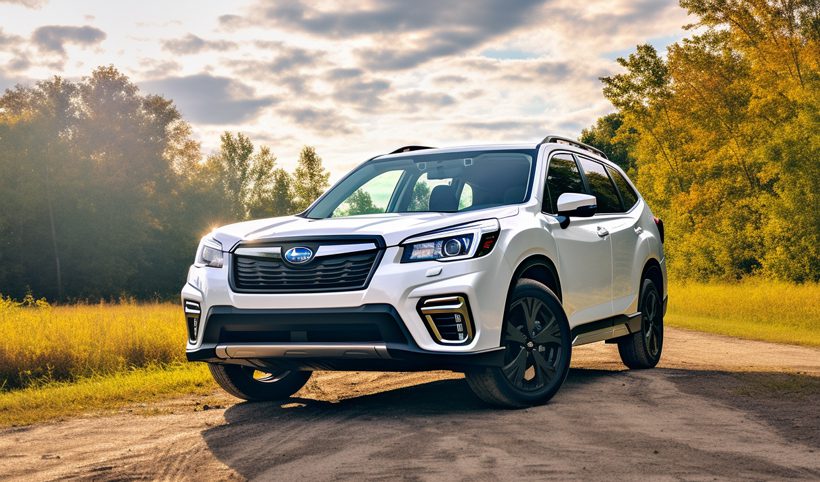
Common ABS (Anti-lock Braking System) related diagnostic trouble codes (DTCs) that may be retrieved by an OBD-II scanner when the ABS light is illuminated in a Subaru Forester:
- C1021 – Right Front Wheel Speed Sensor Circuit Range/Performance
- C1022 – Right Front Wheel Speed Sensor Circuit Low
- C1023 – Right Front Wheel Speed Sensor Circuit High
- C1024 – Left Front Wheel Speed Sensor Circuit Range/Performance
- C1025 – Left Front Wheel Speed Sensor Circuit Low
- C1026 – Left Front Wheel Speed Sensor Circuit High
- C1027 – Right Rear Wheel Speed Sensor Circuit Range/Performance
- C1028 – Right Rear Wheel Speed Sensor Circuit Low
- C1029 – Right Rear Wheel Speed Sensor Circuit High
- C1030 – Left Rear Wheel Speed Sensor Circuit Range/Performance
- C1031 – Left Rear Wheel Speed Sensor Circuit Low
- C1032 – Left Rear Wheel Speed Sensor Circuit High
- C1033 – ABS Pump Motor Relay Circuit Low
- C1034 – ABS Pump Motor Relay Circuit High
- C1035 – ABS Motor Circuit Range/Performance
- C1036 – ABS Motor Circuit Low
- C1037 – ABS Motor Circuit High
- C1038 – ABS Solenoid Circuit Range/Performance
- C1039 – ABS Solenoid Circuit Low
- C1040 – ABS Solenoid Circuit High
These codes indicate issues with the various ABS wheel speed sensors or ABS control module components. In most cases, these error codes can be remedied by the solutions that we have provided below.
2. Fix the Wiring and Connectors
Faulty wiring or connectors will also sometimes cause problems with the ABS. So, a simple visual inspection can reveal issues like corrosion, damage, or loose connections.
- Start by examining the wiring that connects the ABS module to the wheel speed sensors. It’s usually routed along the wheel wells or under the car.
- Look for any obvious indications of harm such as fraying, cuts, or corrosion. Also, ensure that all connections are secure and free of dirt or grime.
- If you spot any damage or loose connections, repair or replacement is your only option.
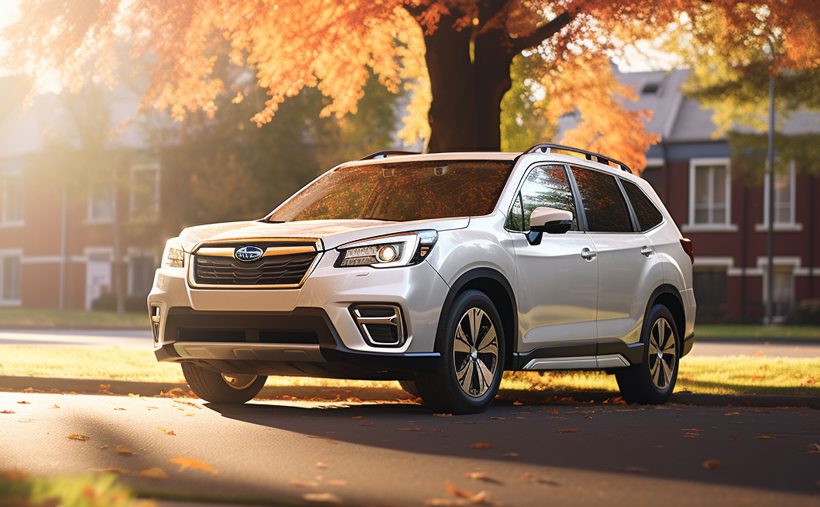
3. Fix the Tire Pressure
Do the following to fix the tire pressure:
- Remove the cap from the tire’s valve stem.
- Connect the pressure gauge exactly to the valve stem. To do that, you must press on it. The gauge will provide a pressure reading.
- Compare the readings of all tires. They should match the recommended tire pressure found in your vehicle’s manual. (Or, on the sticker on the driver’s door jamb). Ideally, the tire pressure of Subaru Forester wheels should be between 32 to 35 psi.
- If any tire’s pressure is off, adjust it by adding or releasing air as necessary.
4. Fix the ABS Fuse
To check and fix the fuse:
- Locate the fuse box. It’s usually under the dashboard or in the engine bay.
- Refer to the fuse box diagram in your vehicle’s manual to identify the ABS fuse.
- Remove the ABS fuse and visually inspect it. The fuse has been blown if the metal strip inside has been broken.
- Always use a new fuse of the same amperage rating to replace a blown one.
5. Replacing Faulty Wheel Speed Sensors
Start by safely jacking up the vehicle and removing the wheel corresponding to the faulty sensor. Then, do the following:
- Locate the sensor – it’s typically located near the brake rotor.
- Unplug the electrical connector from the sensor and remove the sensor by unscrewing it.
- Install the new sensor by screwing it in place and reconnecting the electrical connector.
- Replace the wheel, lower the vehicle, and start the engine to check if the ABS light has turned off.
6. Fixing the ABS Module
Begin by disconnecting the battery. Locate the ABS module in the engine bay. Then, do the following:
- Check for obvious issues like loose connections or corrosion. If found, clean the connections and secure them.
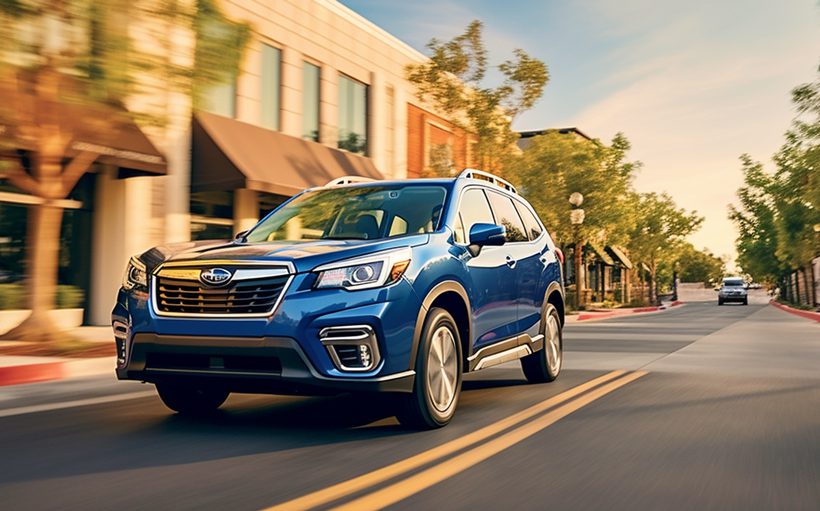
7. Refilling Brake Fluid
Locate the brake fluid reservoir in the engine bay and check its level. Then, do the following:
- If it’s below the “MIN” mark, refill it with the appropriate brake fluid, as mentioned in your vehicle’s manual.
- Start the engine and check if the ABS light is off now.
8. Replacing Brake Components
Check the brake components for wear after jacking up the vehicle and removing the wheel. Then, replace the worn-out components.
Here are the steps for that on a Subaru Forester:
- Jack up the vehicle and support it securely on jack stands. Remove the wheel to access the brake components.
- To replace the pads, remove the caliper bolts that hold the caliper to the brake caliper bracket. Carefully remove the caliper but leave it hanging by the brake hose.
- Pry out the old brake pads from the caliper bracket. Clean any debris from the caliper bracket.
- Install the new pads and secure them with the pad retaining clips or pins. Reinstall the caliper and tighten the caliper bolts to the specified torque.
- Inspect the brake rotor surface. If deeply scored or worn, the rotor needs to be resurfaced or replaced. To replace, remove the caliper and rotor retaining bolts. Pull off the old rotor. Install the new rotor and secure it with bolts.
- After replacing any components, pump the brake pedal to bring the pads close to the rotor before driving. Check the brake fluid level in the master cylinder reservoir and top off if needed.
- Reinstall the wheel and lower the vehicle. Road tests the brakes, allowing them to bed in before hard braking.
- Lastly, check if the ABS light has turned off.
Subaru Forester ABS Light On: How to Replace the ABS and When to Do It (DIY Method)
If you’re confident with DIY vehicle repairs, here is a comprehensive step-by-step guide on how to replace the ABS by yourself.
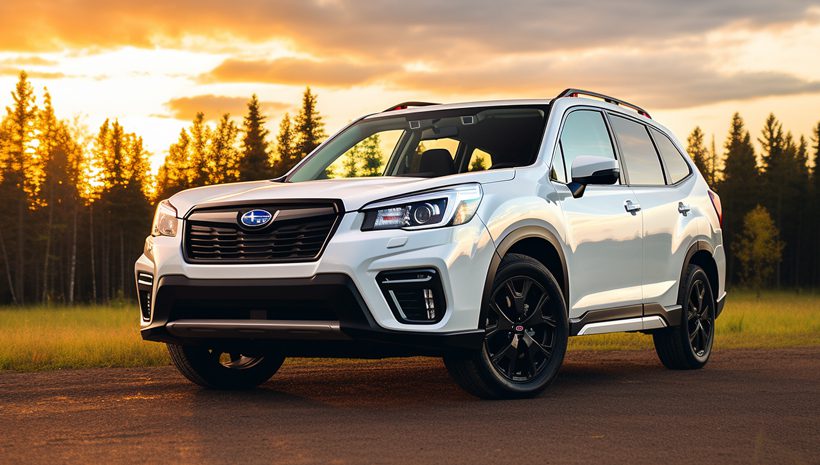
Replacing the ABS won’t feel as tricky if you follow the below steps:
Step 1: Preparation
First off, gather all the necessary tools:
- A socket set
- A wrench set
- An OBD-II scanner (optional but recommended)
- A new ABS module specific to your Forester model
Step 2: Locate the ABS Module
The ABS module is usually located in the engine compartment. Find its exact location.
Step 3: Disconnect the Battery
Disconnect the battery to prevent any accidental short circuits or other electrical mishaps.
Step 4: Disconnect and Remove the Old ABS Module
At this point, carefully follow the below process:
- Locate the ABS module’s electrical connectors and remove them
- Avoid damaging the connectors
- Now, use your socket set to unscrew the bolts holding the module in place
- Remove the old ABS module
Step 5: Install the New ABS Module
After removing the old ABS, here’s what you have to do:
- Install the new ABS module in the same position as the old one
- Fasten it securely with the bolts you took out earlier
- Then, reconnect the electrical connectors
Step 6: Reconnect the Battery and Check the ABS Light
Once you’ve successfully installed the new ABS module,
- Reconnect the battery
- Start your Subaru Forester
- Check the dashboard
The ABS light should no longer be illuminated.
If you’re a Subaru Forester owner grappling with an ABS light issue, our article on right turn signal and brake light not working on trailer problems might offer insights relevant to your situation. Moreover, if you’re experiencing a situation where your brake lights are not working but the third light is functional, our guide on brake lights not working but third light is concerns is here to assist you. We recognize the importance of addressing vehicle safety and related issues, and our comprehensive resources aim to help you navigate and resolve any challenges you may encounter.FAQs
Now, in this section, we will walk you through some of the most frequently asked questions related to this topic:
It’s generally safe for short distances. But, since the ABS may not function properly, it could be fatal at long and challenging distances.
You can’t. The light will go off automatically once the problem causing it is addressed.
In most jurisdictions, an illuminated ABS light will cause your vehicle to fail safety inspection. However, there have been some cases where vehicles did pass safety inspections with the ABS lights on. So, it’s pure luck whether you’ll pass safety checks or not.
The costs would vary based on the causes. Simple fixes are inexpensive, but parts like the ABS module are costly to replace. So, the average cost ranges from $80 to $1,000.
Final Takeaways
Let’s pause and reflect on some key takeaways from this discussion:
- From simple causes like low brake fluid or tire pressure imbalances to more complex issues like faulty wheel speed sensors or a malfunctioning ABS module. Several factors can trigger the ABS light.
- Using an OBD-II scanner, inspecting the ABS wiring, brake fluid levels & fuses, and correcting tire pressure are the foremost methods to pinpoint the problem.
Remember, the longevity of your Subaru Forester is synonymous with promptly addressing ABS-related issues. So, here’s to safer driving!

